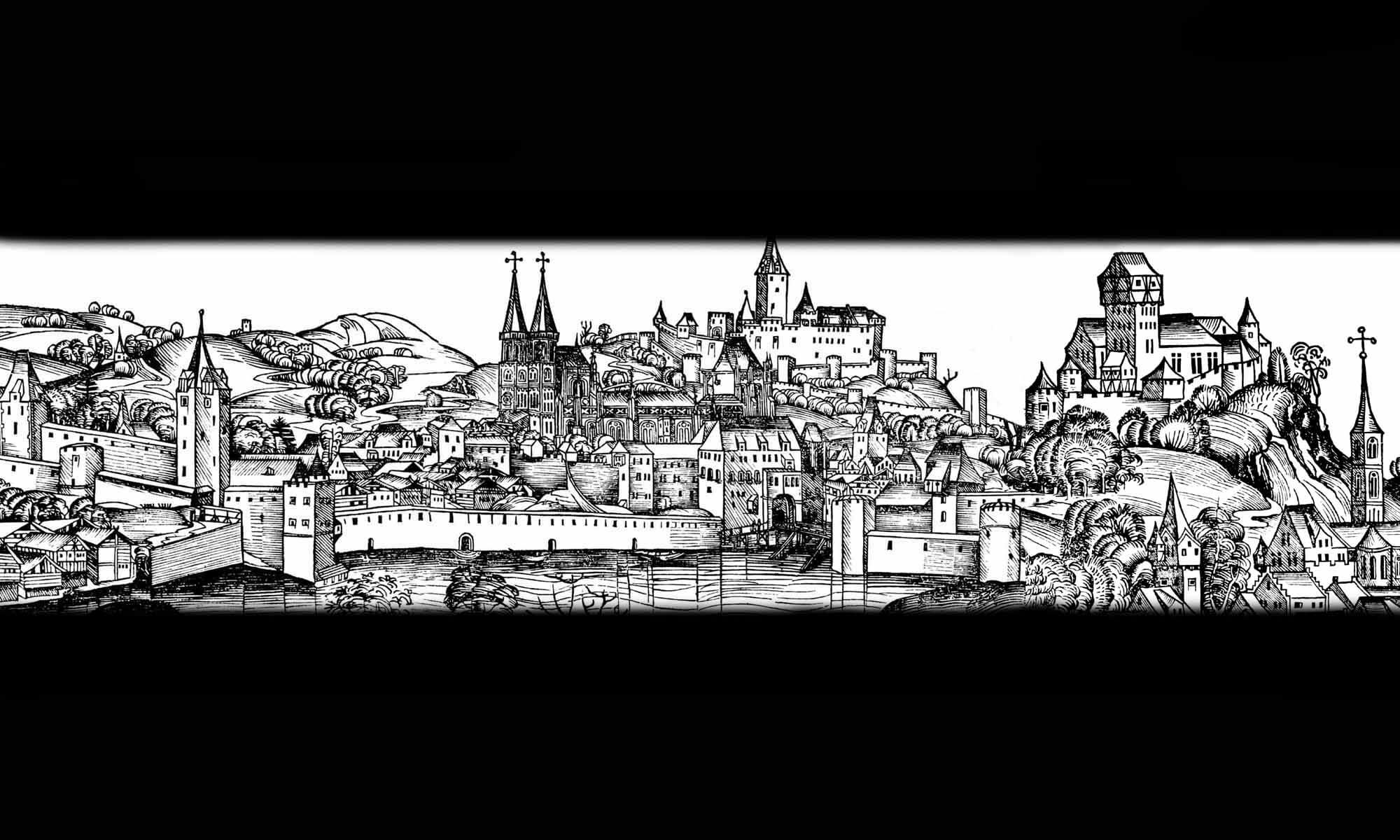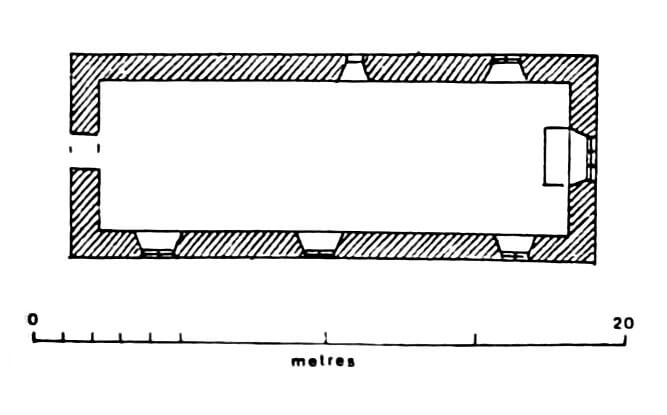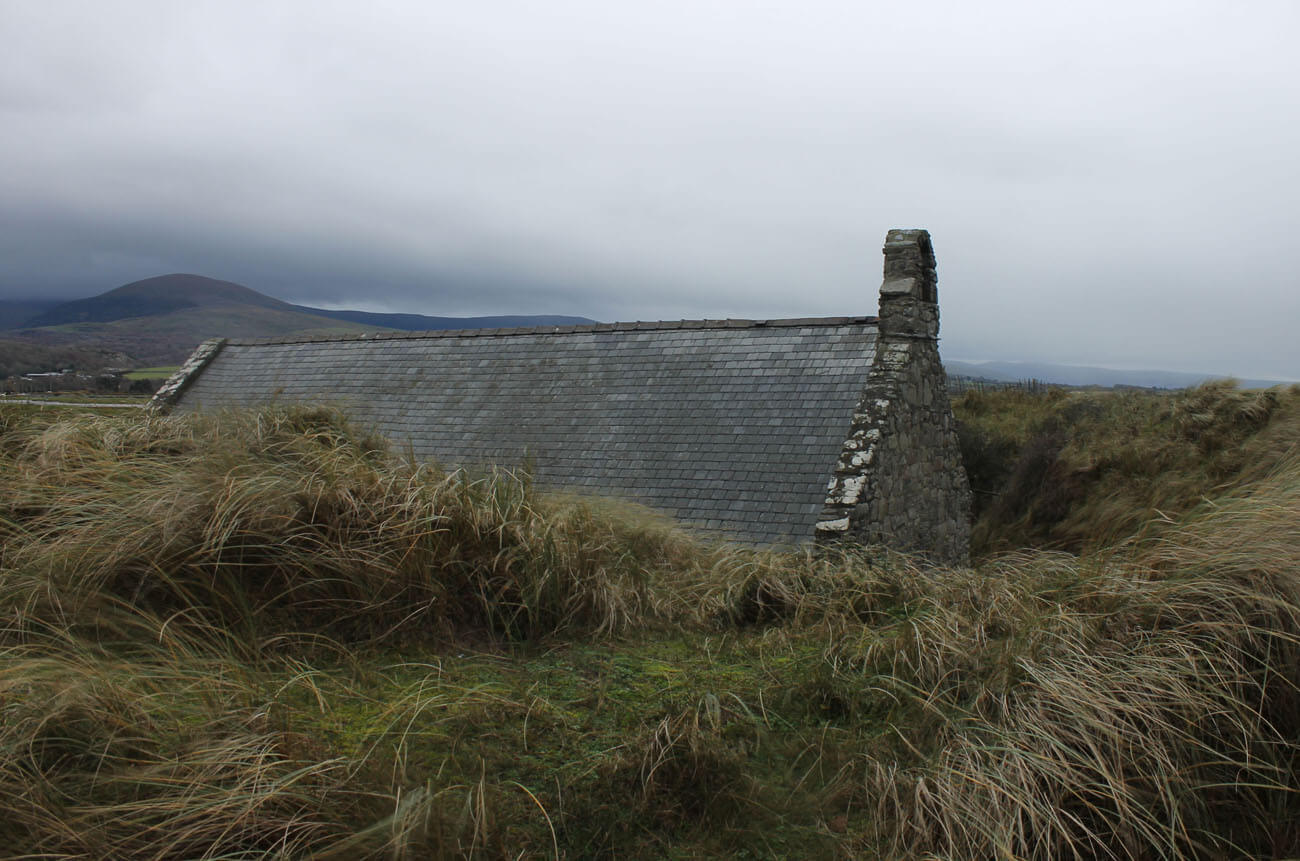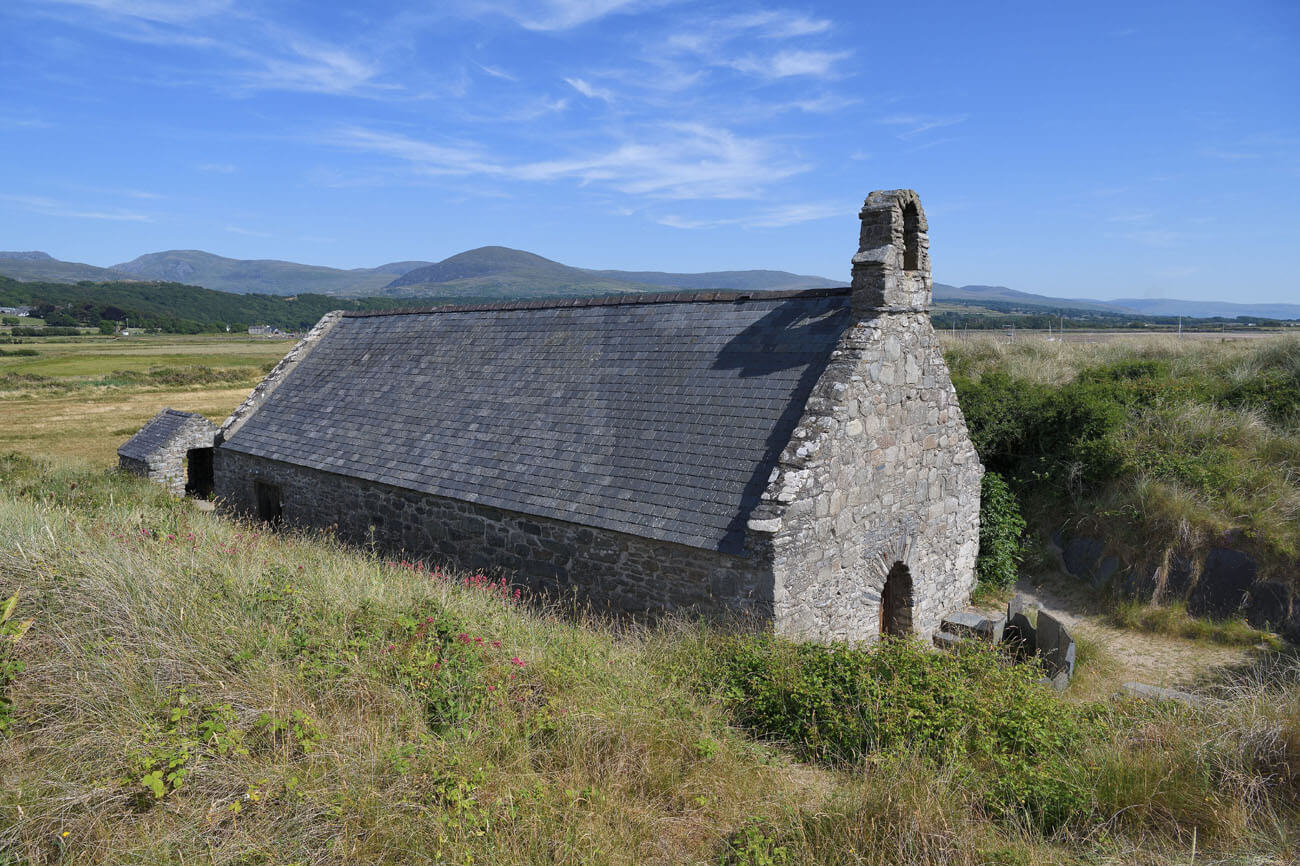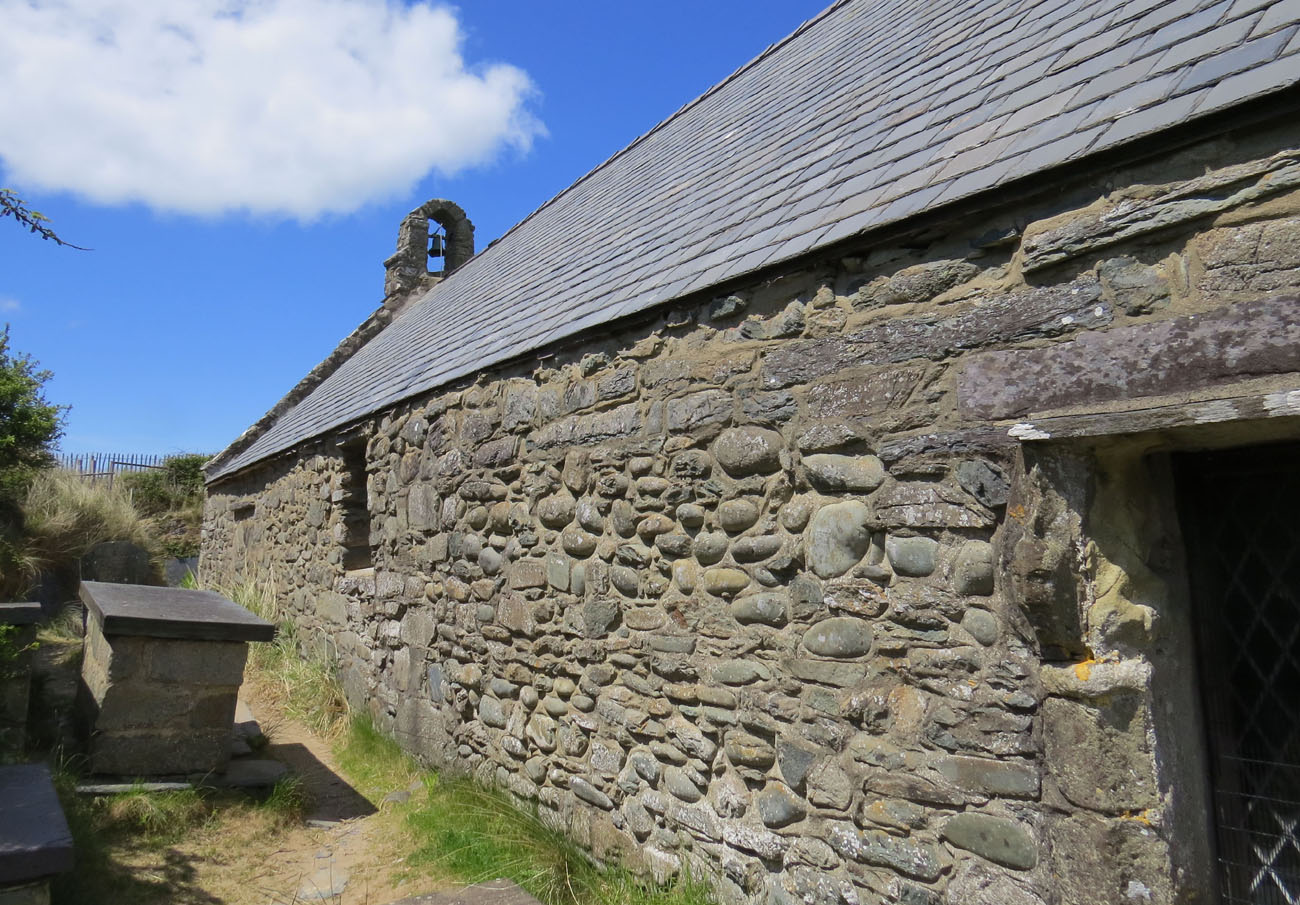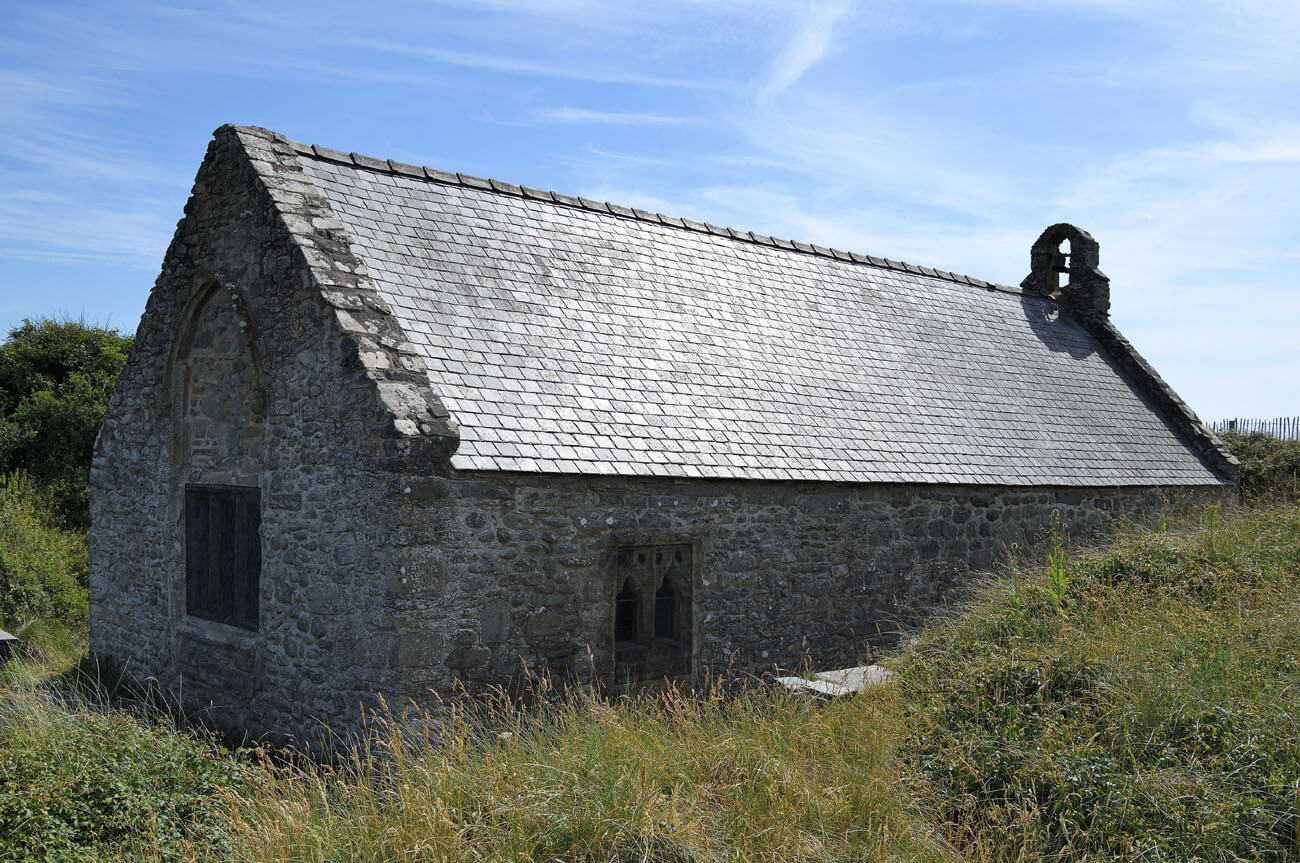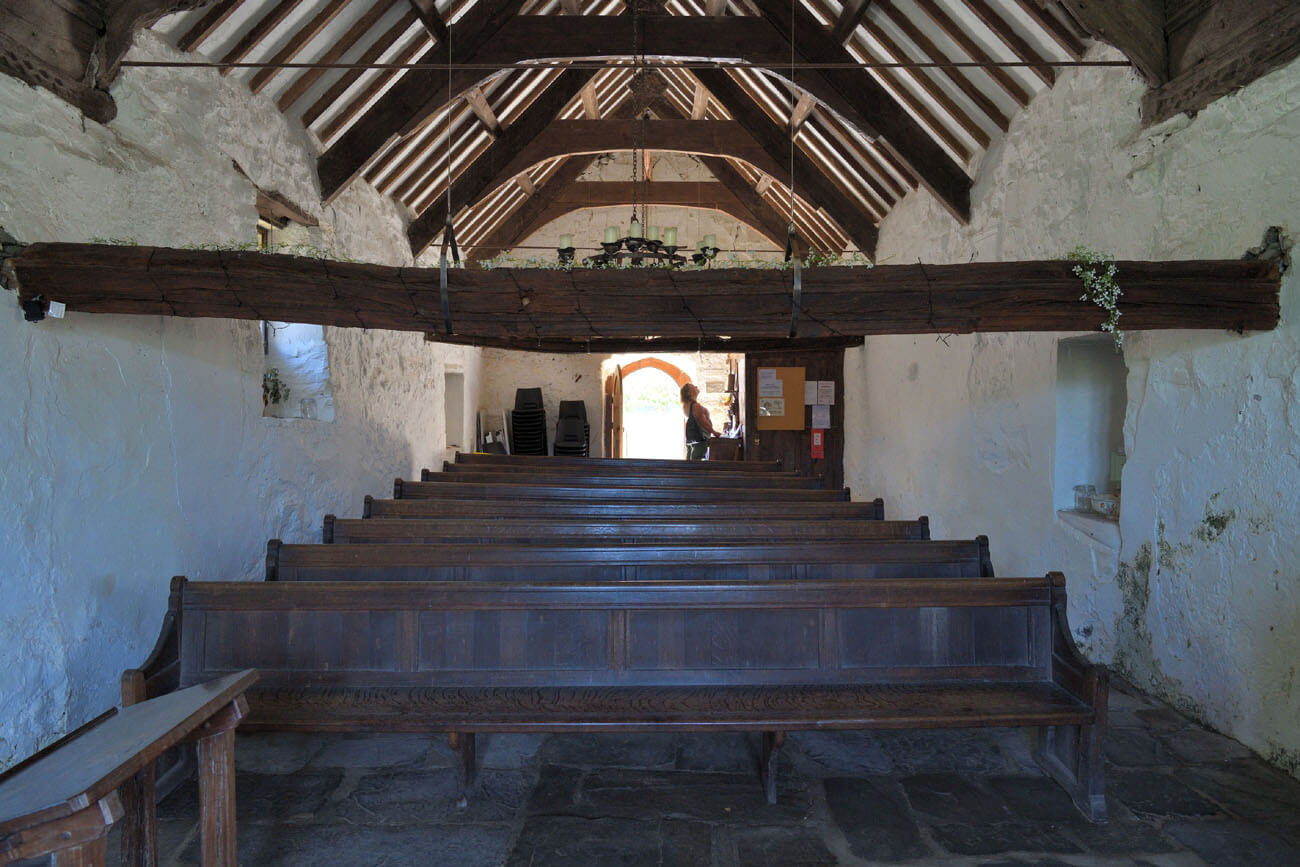History
The church of St. Tanwg in Llandanwg was built in the 13th century, but it likely stood on the site of an earlier church from the 5th/6th centuries. From the late 13th century, it served the population of nearby Harlech Castle. It was probably enlarged in the late 14th century or in the 15th century, and the chancel was separated by a rood screen. In the 17th century, the church was repaired, unfortunately altering some of the windows in the process. The rood screen was also removed at that time, and the medieval wall murals were painted over. In the first half of the 19th century, after the construction of a new parish church in Harlech, St. Tanwg’s Church was abandoned. It was not until 1884 that it was renovated, which included the removal of sand blown from the dunes and the installation of a new roof.
Architecture
The church was built several meters from the sea coast on the west side, and in the Middle Ages, when the sand dunes were much lower, it was supposed to be surrounded by a ditch or perhaps by a stream flowing nearby. This ditch certainly separated the area of the church cemetery with dimensions of about 43 x 29 meters. There were probably many smaller and larger watercourses flowing nearby, passing down from the hills to the north-east and joining the Artro River.
The church’s plan was initially rectangular, with interior dimensions of 10.7 x 5 meters, without an externally separated chancel. In the 14th or 15th century, the building was extended eastward, and the new part was allocated to the chancel, which was separated by the timber rood screen. The building then reached dimensions of 17.3 x 7 meters. A small bellcote was set into the western gable wall than.
The original narrow entrance, made of voussoirs, was located on the south side, in the western part of the nave. Initially, the church was lit through narrow slit openings, which in the Gothic period were replaced by windows with ogee arches, filled with trefoil tracery, and with straight frames set on carved masks. A large, very tall pointed window in the eastern wall stood out. The interior was covered with a wooden, open roof truss with semicircular collar beams. In the 14th or 15th century, the walls were covered with polychromes with green and red patterns and woven black inscriptions.
Current state
The restored church has retained its original layout, but due to the sand blowing, today it is barely visible from a distance. The original entrance to the interior is bricked up and the current one probably dates from 1685. Furthermore, there are early modern windows in the western part of the northern and southern walls. On the northern and southern sides of the chancel 15th-century windows have been preserved. In the eastern wall, there are still remnants of a large Gothic window, replaced in the 18th century with a smaller opening. Inside the church, a medieval roof truss, traces of wall paintings and a Celtic cross from around the 9th century have been preserved.
bibliography:
Haslam R., Orbach J., Voelcker A., The buildings of Wales, Gwynedd, London 2009.
Salter M., The old parish churches of North Wales, Malvern 1993.
The Royal Commission on The Ancient and Historical Monuments and Constructions in Wales and Monmouthshire. An Inventory of the Ancient Monuments in Wales and Monmouthshire. County of Merioneth, London 1921.
Wooding J., Yates N., A Guide to the churches and chapels of Wales, Cardiff 2011.
